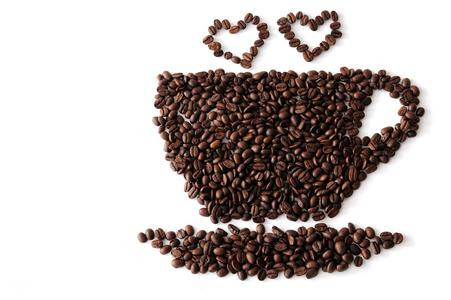The life cycle of coffee and digital coffee trees is about 50 years.

The life cycle of coffee trees is about 50 years.
There are 73 varieties of coffee, but only two are widely used. Arabica (Arabica) and Roberta ().
The two oldest and best varieties of Arabica coffee are Typica and Bourbon.
There are about 2250 ships engaged in coffee bean transportation around the world.
There are more than 200 varieties of Arabica coffee.
Roberta has more than 50 variants.
The earliest coffee shop was located in Europe and was founded around 1650 AD.
When the coffee tree begins to bloom, it will be covered with 30000 small white flowers with a faint scent of jasmine.
Arabica coffee has 900 different flavors.
The ideal brewing temperature is 85 o C (180 o F).
Coffee is the second largest economic product in the world, after oil.
Today, coffee is produced in 75 countries.
The world consumes 1.4 billion cups a day.
The average annual coffee consumption in the world is 4.6 kg.
Brazil accounts for 1 / 3 of global production.
There are about 3 billion coffee trees in Brazil.
In 2004, 16% of Americans drank coffee every day.
Espresso contains less caffeine, mainly because the coffee powder is in contact with water for a short time of 25 seconds due to high pressure extraction.
Caffeine is colorless and tasteless.
Coffee was first found in Ethiopia.
In 1683, a pound of coffee could buy 4 A cres land in New York.
Arabica accounts for 80% of the world's coffee production.
A cup of Italian concentrate uses about 35 or 45 coffee beans.
There are about 600000 coffee beans in a bag of 60kg coffee.
There are about 1000 coffee beans per 1kg.
More than 25 million people around the world are involved in the coffee industry.
About 5 million people in Brazil are involved in the coffee industry.
12 million people in Ethiopia are engaged in the coffee industry.
A pound of coffee requires about 4000 roasted beans.
About 100 pounds of coffee fruit is harvested manually a day, and only about 25 pounds of coffee beans are left after processing.
60% of people drink coffee with cream and sugar, while the remaining 40% drink black coffee.
The body removes 20% of its caffeine every hour. The human body can absorb the highest amount of caffeine from 300mg. Coffee drinkers are less likely to have asthma.
Important Notice :
前街咖啡 FrontStreet Coffee has moved to new addredd:
FrontStreet Coffee Address: 315,Donghua East Road,GuangZhou
Tel:020 38364473
- Prev

Coffee Culture the collision between Oriental Tea Culture and Western Coffee Culture
The spread of tea to Europe and the introduction of coffee into China are regarded as a major event of spreading civilization. although coffee has not yet become a popular drink in China, tea has become a part of the quality of life and enjoyment of Europeans. People with gentleman cultivation or noble taste pay much attention to drinking tea, and the leisurely afternoon tea every day is reminiscent of the philosophy and literary atmosphere in the salon. But it's early.
- Next

Blue Mountain Coffee: its fragrance is not a disgrace to its origin.
The initial form of coffee, coffee beans. The name Blue Mountain is beautiful, with a melancholy and ethereal meaning. But in fact, it just indicates the origin of the coffee, the blue mountain area of Jamaica. So most coffee names do not have much meaning, they are just a string of beautiful syllables, beating on the tip of the tongue, the tongue around a bend, the end to the starting point to achieve its recitation. Blue Mountain Coffee
Related
- Beginners will see the "Coffee pull flower" guide!
- What is the difference between ice blog purified milk and ordinary milk coffee?
- Why is the Philippines the largest producer of crops in Liberia?
- For coffee extraction, should the fine powder be retained?
- How does extracted espresso fill pressed powder? How much strength does it take to press the powder?
- How to make jasmine cold extract coffee? Is the jasmine + latte good?
- Will this little toy really make the coffee taste better? How does Lily Drip affect coffee extraction?
- Will the action of slapping the filter cup also affect coffee extraction?
- What's the difference between powder-to-water ratio and powder-to-liquid ratio?
- What is the Ethiopian local species? What does it have to do with Heirloom native species?

